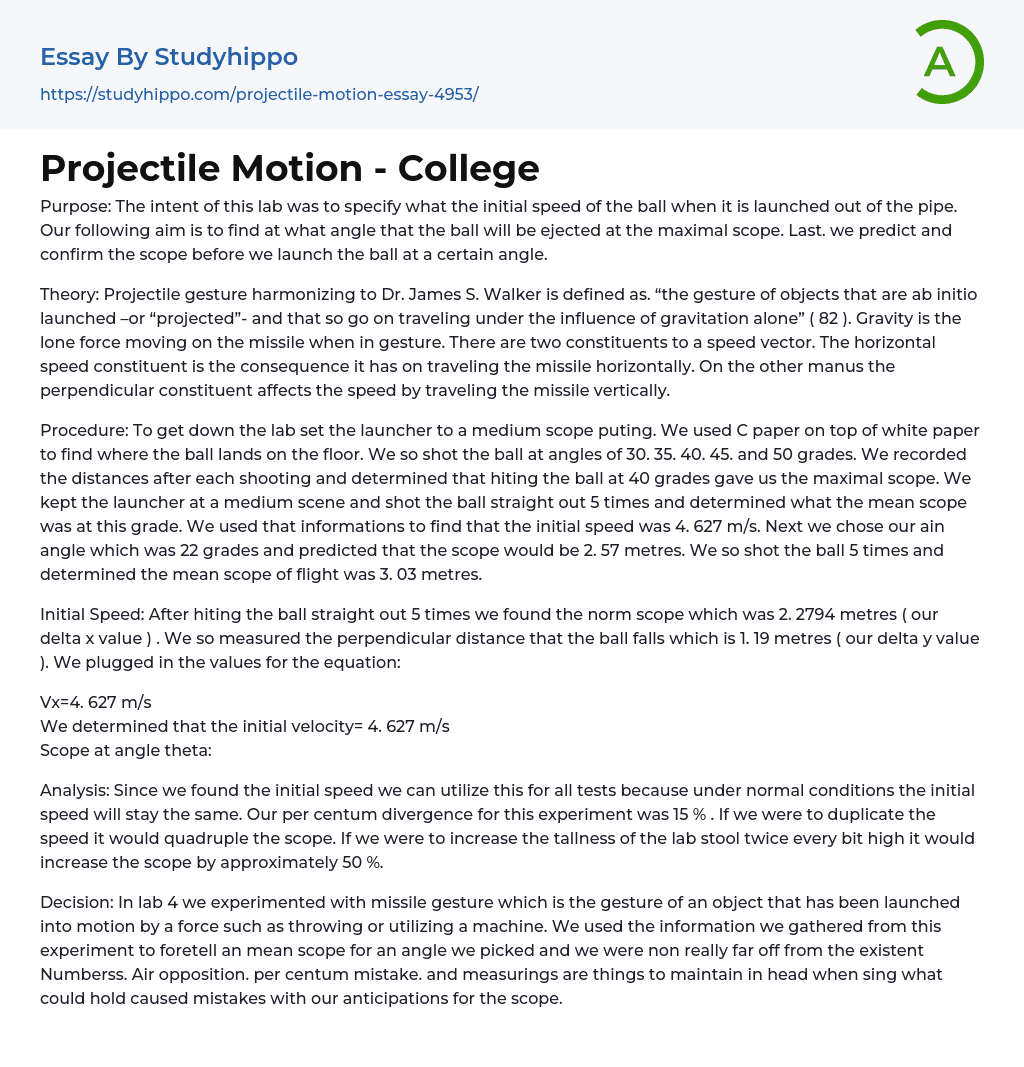Purpose: The goal of this lab was to determine the initial speed of the ball when it is launched out of the pipe.
Our goal is to determine the optimal angle at which the ball will be launched for maximum range. Lastly, we predict and verify the range before launching the ball at a specific angle. Theory: Projectile motion, according to Dr.
According to James S. Walker, the concept of projectile motion refers to objects that are initially launched or "projected" and continue to move solely under the influence of gravity (82). Gravity is the only force in action on the projectile during its motion. The speed vector of a projectile comprises two components. One of them is the horizontal speed component, which affects the projectile's horizontal movement.
On the opposite hand, the vertical component impacts th
...e velocity by moving the projectile vertically. Procedure: To begin the experiment, adjust the launcher to a medium setting. We placed carbon paper on top of white paper in order to determine the landing spot of the ball on the ground. Next, we launched the ball at angles of 30, 35, and 40.
We measured the distances achieved after shooting at 45 and 50 degrees. After analyzing the results, we found that hitting the ball at a 40-degree angle provided the maximum distance. We maintained the launcher at a medium setting and shot the ball straight out five times to calculate the average distance achieved at this angle.
We utilized the given information to determine that the initial speed was 4.627 m/s. Then, we selected our own angle of 22 degrees and estimated that the range would be 2.57 meters.
We shot the
ball 5 times and determined that the mean scope of flight was 3.03 meters. The initial speed of the ball was measured to be 2.2794 meters (represented as delta x). Additionally, we measured the perpendicular distance that the ball falls, which was 1.19 meters (represented as delta y).
We substituted the values for the equation: Vx=4.627 m/s. We calculated that the initial velocity is 4.627 m/s. Scope at angle theta. Analysis: With the initial speed determined, we can apply it to all tests as the initial speed remains constant under normal conditions. Our percentage deviation for this experiment was 15%. If we were to replicate the speed, it would quadruple the scope. Furthermore, increasing the height of the lab stool twice as high would result in approximately a 50% increase in scope.
Decision: During lab 4, we explored the concept of missile gesture, which involves the motion of an object being launched by a force, whether through throwing or using a machine. We utilized the data collected from this experiment to predict an average angle range, and our predictions were fairly accurate. When analyzing the potential sources of errors in our predictions for the range, factors such as air resistance, percentage error, and measurements should be considered.




